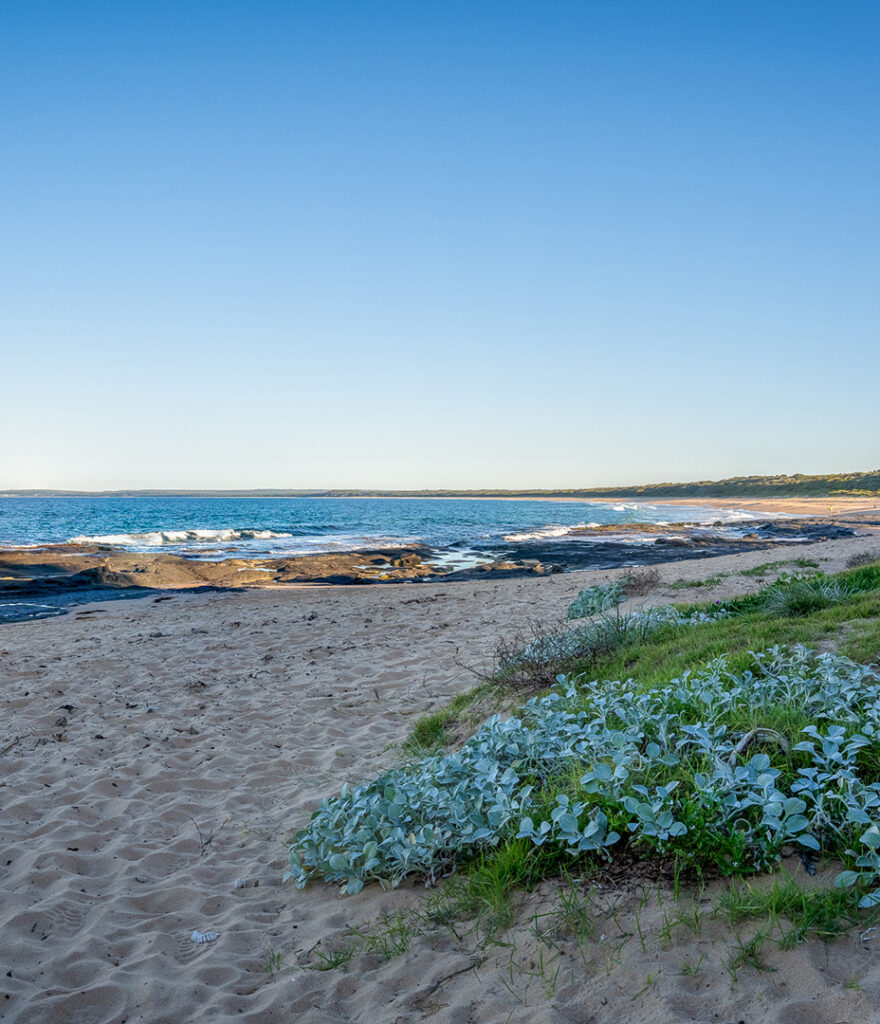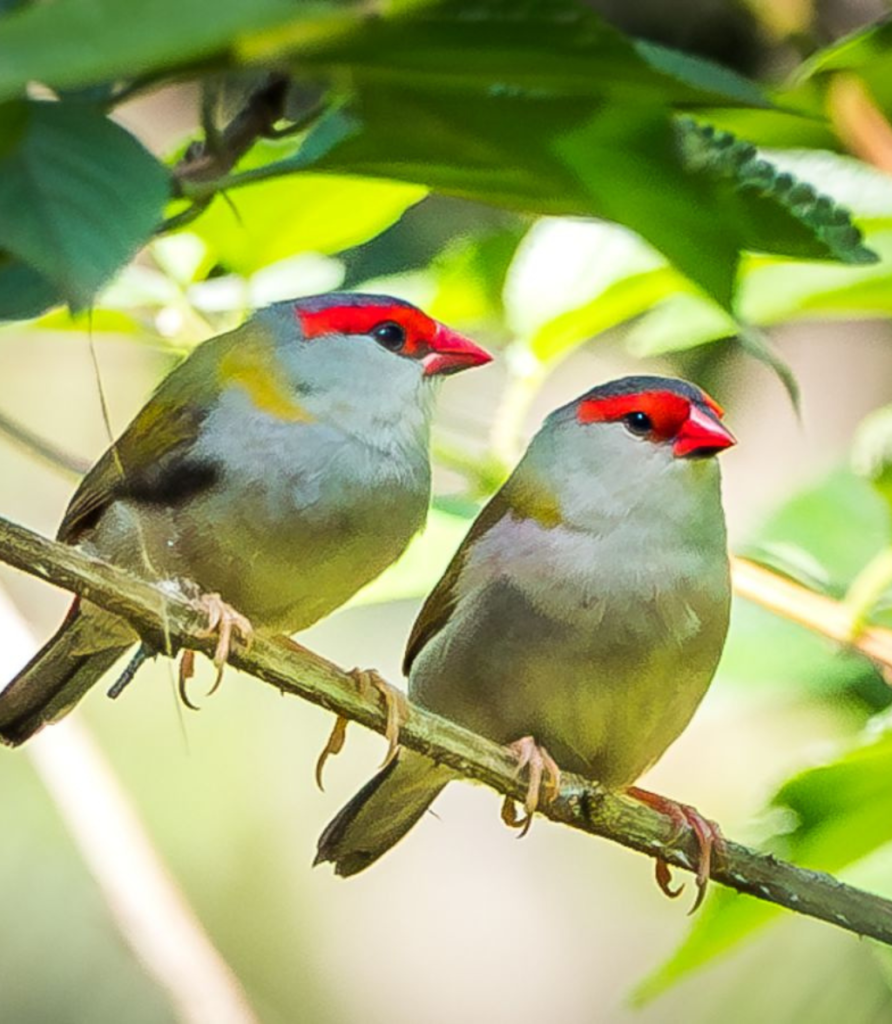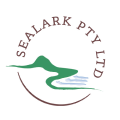Lake Wollumboola
Overview
There are three areas within the Lake Wollumboola biodiversity site
- Culburra Beach – 570.29 hectares
- Callala Bay – 312.16 hectares
- Kinghorn Point – 199.12 hectares
Total: 1081.57 hectares
Location: approx. 15 kilometres east of Nowra, Shoalhaven LGA, NSW south coast
The Lake Wollumboola biodiversity site is within the Southern Rivers Catchment Area and mostly within the Jervis IBRA subregion, with a small part of the north-west corner within the Illawarra IBRA sub-region of the Sydney Basin IBRA region. The majority of the site is located within the Wandandian Coastal Plains Mitchell Landscapes, with a small portion of the site located in the Seven Mile Barrier Mitchell Landscape.
The Lake Wollumboola biodiversity site comprises privately-owned land in three sections, at Culburra Beach, Callala Bay and Kinghorn Point. Though each section has distinct management issues and ecological characteristics, they are ecologically connected by Jervis Bay National Park.
It is in an area of outstanding biodiversity and natural scenic values. Much of the catchment of Lake Wollumboola remains forested with a significant proportion comprising National Park. Sealark’s biodiversity site includes approximately 4,760 metres of the Lake Wollumboola foreshore.
The townships of Culburra Beach and Callala Bay are located to the north-east and south of the site, and a significant proportion is within the Lake Wollumboola catchment, which is recognised for its significance as a migratory bird habitat. A portion of the Culburra Beach site drains into Jervis Bay to the south.
A range of threatened flora and fauna have been identified within the site, including threatened orchids, saltmarsh plants, shorebirds, raptors, owls, arboreal and terrestrial mammals, and microbats. It is likely, given the extent, excellent condition and range of vegetation types within the site, that other as yet undocumented threatened species are present too. Sealark’s careful management and conservation work on the site is crucial to support the protection of these species.
Within the broader landscape, the Lake Wollumboola biodiversity site is contiguous with extensive tracts of native vegetation. It is connected to Jervis Bay National Park, and westwards to the Currambene and Nowra State Forests, and Saltwater Swamp Nature Reserve. To the south, the site is connected to Jervis Bay Marine Park (Hare Bay Sanctuary Zone, Hammer Head Sanctuary Zone, Wowly Gully Sanctuary Zone, Jervis Bay Habitat Protection Zone and Hammer Head/Crookhaven Bight). Large areas of native vegetation also remain on private land holdings surrounding the site.

Flora
The Lake Wollumboola biodiversity site is home to a mosaic of vegetation communities including fringing estuarine saltmarsh and wetland vegetation which transitions to coastal heaths, woodlands and tall coastal forests.
Parts of the site have been subject to historic logging, however large stags and living trees with significant tree hollows remain common in the forested areas.
15 plant community types (PCTs) have been identified within the site:
- Red Bloodwood – Blackbutt – Spotted Gum shrubby open forest on coastal foothills, southern Sydney Basin Bioregion (PCT 1079)
- Swamp Mahogany swamp sclerophyll forest on coastal lowlands of the Sydney Basin Bioregion and South East Corner Bioregion (PCT 1231)
- Woollybutt – White Stringybark – Forest Red Gum grassy woodland on coastal lowlands, southern Sydney Basin Bioregion and South East Corner Bioregion (PCT 1326)
- Swamp Oak swamp forest fringing estuaries, Sydney Basin Bioregion and South East Corner Bioregion (PCT 1234)
- Swamp Oak floodplain swamp forest, Sydney Basin Bioregion and South East Corner Bioregion (PCT 1232)
- Swamp Paperbark – Swamp Oak tall shrubland on estuarine flats, Sydney Basin Bioregion and South East Corner Bioregion (PCT 1236)
- Bangalay – Old-man Banksia open forest on coastal sands, Sydney Basin Bioregion and South East Corner Bioregion (PCT 659)
- Red Bloodwood – Hard-leaved Scribbly Gum – Silvertop Ash heathy open forest on sandstone plateaux of the lower Shoalhaven Valley, Sydney Basin Bioregion (PCT 1079)
- Blackbutt – Turpentine – Bangalay moist open forest on sheltered slopes and gullies, southern Sydney Basin Bioregion (PCT 694)
- Coast Banksia – Coast Tea-tree low moist forest on coastal sands and headlands, Sydney Basin Bioregion and South East Corner Bioregion (PCT 771)
- Coast Banksia – Coast Wattle dune scrub, Sydney Basin Bioregion and South East Corner Bioregion (PCT 772)
- Banksia – Red Bloodwood – Hard-leaved Scribbly Gum heathy open woodland on sandstone plateaux, southern Sydney Basin Bioregion (PCT 662)
- Hairpin Banksia – Slender Tea-tree heath on coastal sandstone plateaux, Sydney Basin Bioregion (PCT 882)
- Saltmarsh in estuaries of the Sydney Basin Bioregion and South East Corner Bioregion (PCT 1126)
- Coastal freshwater lagoons of the Sydney Basin Bioregion and South East Corner Bioregion (PCT 781).
Five threatened ecological communities (EEC) listed under the NSW Threatened Species Conservation Act 1995 and one EEC listed under the Commonwealth Environment Protection and Biodiversity Conservation Act 1999 occur within the biodiversity site.
One of the EECs, Swamp Oak Floodplain Forest of the NSW North Coast, Sydney Basin and South East Corner bioregions, is represented by three different PCTs (PCT 1232, PCT 1234 and PCT 1236). The remaining EECs within the site are: Swamp Sclerophyll Forest on the Coastal Floodplains of the New South Wales North Coast, Sydney Basin and South East Corner Bioregions EEC (represented by PCT 1231); Bangalay Sand Forest, Sydney Basin and South East Corner bioregion (represented by PCT 659); Freshwater Wetlands on Coastal Floodplains of the NSW North Coast, Sydney Basin and South East Corner bioregions (represented by PCT 781); and Coastal Saltmarsh in the New South Wales North Coast, Sydney Basin and South East Corner Bioregions (represented by PCT 1126). The Coastal Saltmarsh vegetation community is also listed as vulnerable under the Environment Protection and Biodiversity Conservation Act 1999.
There is one threatened orchid, a Bauer’s Midge Orchid (Genoplesium baueri), on the site.

Fauna
Lake Wollumboola is listed on the Commonwealth Directory of Important Wetlands and acknowledged as “a unique system in terms of its maturity, trapping efficiency, height above sea level and complexity of ecological processes occurring within the lake”.
It provides important summer seasonal foraging habitat for up to 23 internationally protected migratory shorebird species and is a known breeding colony of the endangered Little Tern (Sturnula albifrons). The lake is an important east coast drought refuge for the Black Swan (Cygnus atratus) and thousands may be observed grazing on algae and seagrasses. Currently, two threatened fauna species including the White-footed Dunnart (Sminthopsis leucopus) and Eastern Pygmy Possum (Cercartetus nanus) exist on the Lake Wollumboola biodiversity site.

